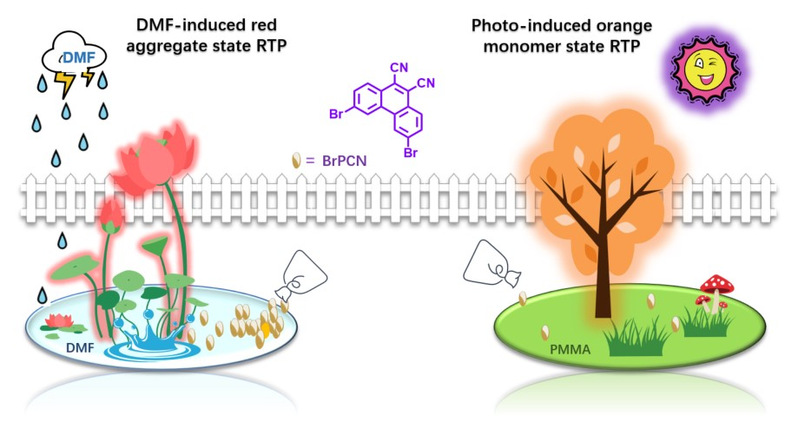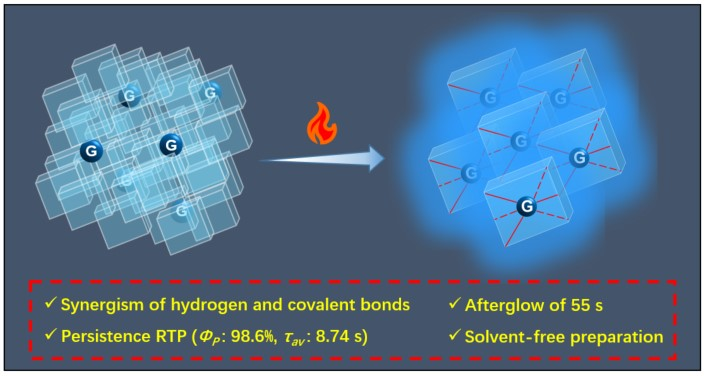Due to its multi-dimension, richness and dynamic luminescence, organic room temperature phosphorescence (RTP) is widely used in the frontier fields of science such as anti-counterfeiting, information encryption, biological sensing and imaging, and is one of the research hotspots of luminescent materials. Recently, research team of researcher Lin Zhenghuan and Professor Ling Qidan of College of Chemistry and Materials Science of FNU published two papers on host-guest room temperature phosphorescence in Angewandte Chemie International Edition and Chemical Engineering.
In their first research, they designed host-guest room-temperature phosphorescence (RTP) with inorganic boric acid as host and aryl boric acid or carboxylic acid as guest. The interaction of hydrogen bond and covalent bond between host and guest firmly fixed the organic guest molecule, producing highly efficient and long-lasting room-temperature phosphorescence. The phosphorescence quantum yields of the obtained materials were all over 40%, and the highest was close to 100%. The longest average lifetime was 8.74 seconds, and the afterglow reached 55 seconds when the UV lamp was turned off. In addition, its production and storage method was simple and efficient and without solvent, which was suitable for industrial production. The results were published in Angewandte Chemie International Edition titled as Nearly Unity Quantum Yield Persistent Room Temperature Phosphorescence from Heavy Atom-Free Rigid Inorganic/Organic Hybrid Frameworks.
Here is the paper link: https://doi.org/10.1002/anie.202207104
In their second research, they first developed room-temperature phosphorescence (RTP) with multiple stimulus responses in both aggregate and single-molecule states. The experimental results demonstrated that the luminescence center came from the clusters formed by a tiny amount of guest molecule and host molecule during the crystallization process. These multi-mode stimulus-responsive phosphorescent materials were expected to be the next generation of smart materials, which played an important role in the fields of password lock and information encryption and decryption. The study was published in Chemical Engineering titled as Multimode Stimuli Responsive Dual-state Organic Room Temperature Phosphorescence from a Phenanthrene Derivative.
Here is the paper link: The above https://doi.org/10.1016/j.cej.2022.136629
Above work is supported by projects such as the National Natural Science Foundation of China (NSFC) and the Fujian Natural Science Foundation.
(Department of Science and Technology, College of Optoelectronics and information engineering)


(Translated by Chen Xinhao/Reviewed by Chen Fang)
